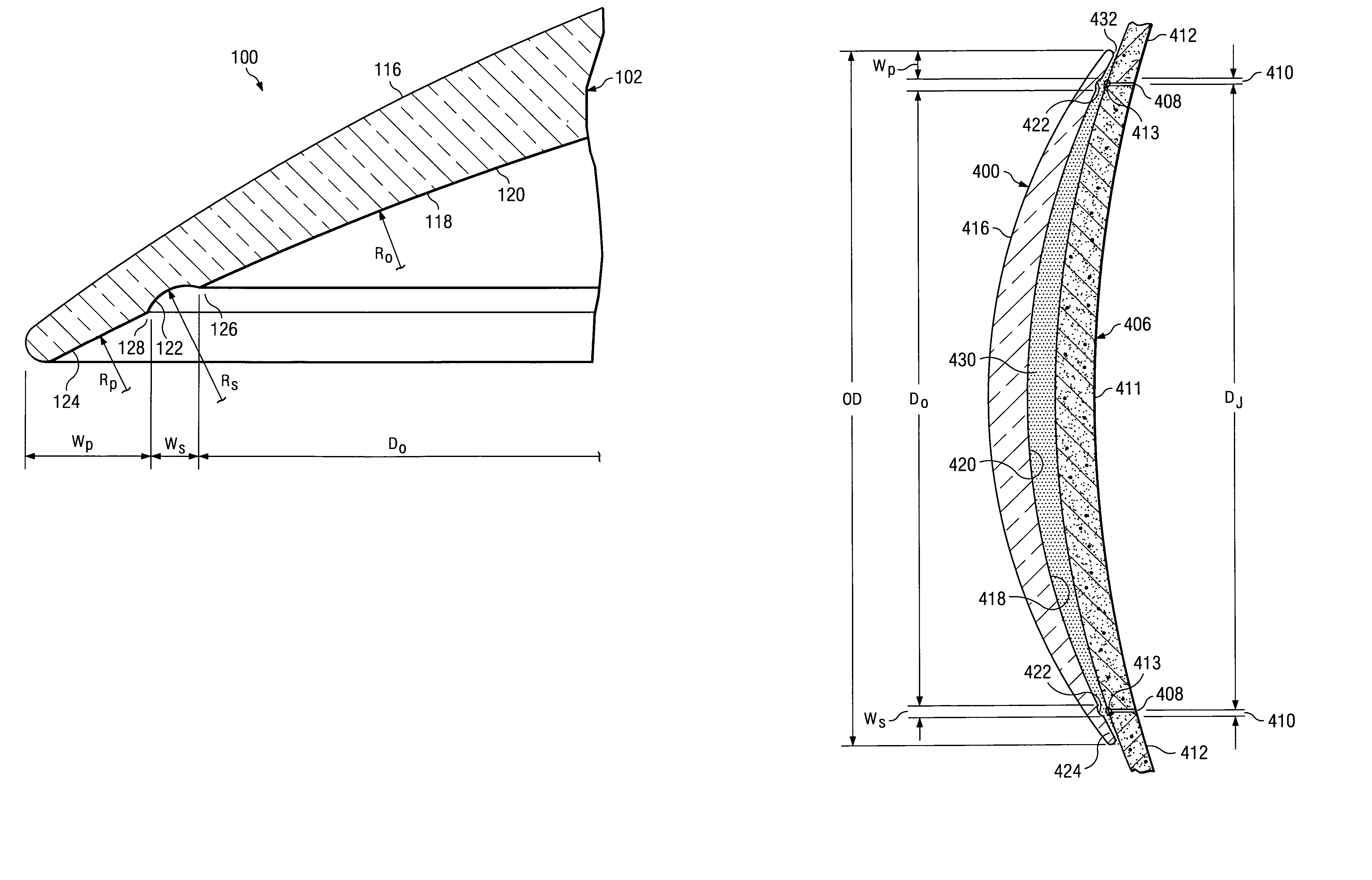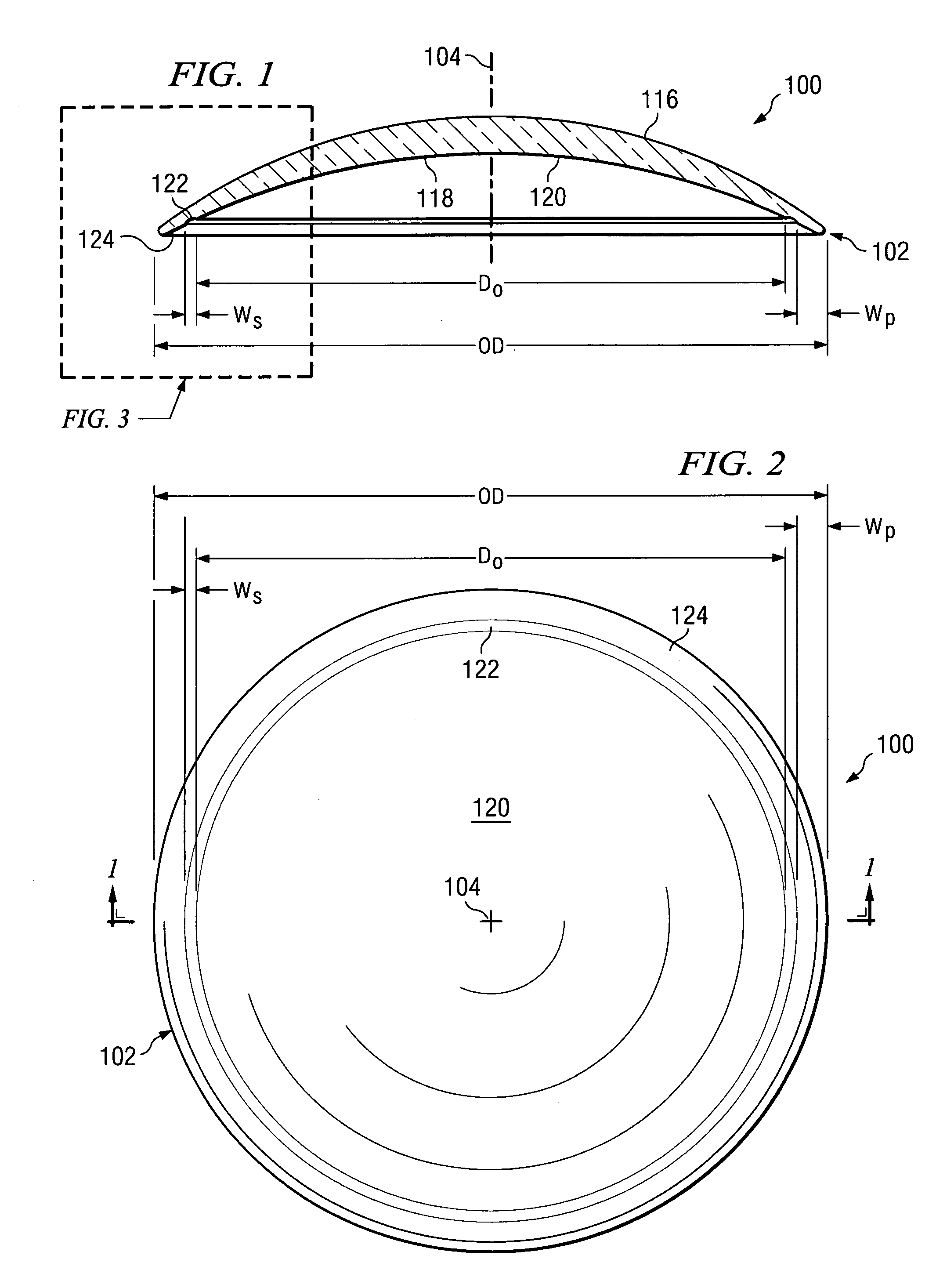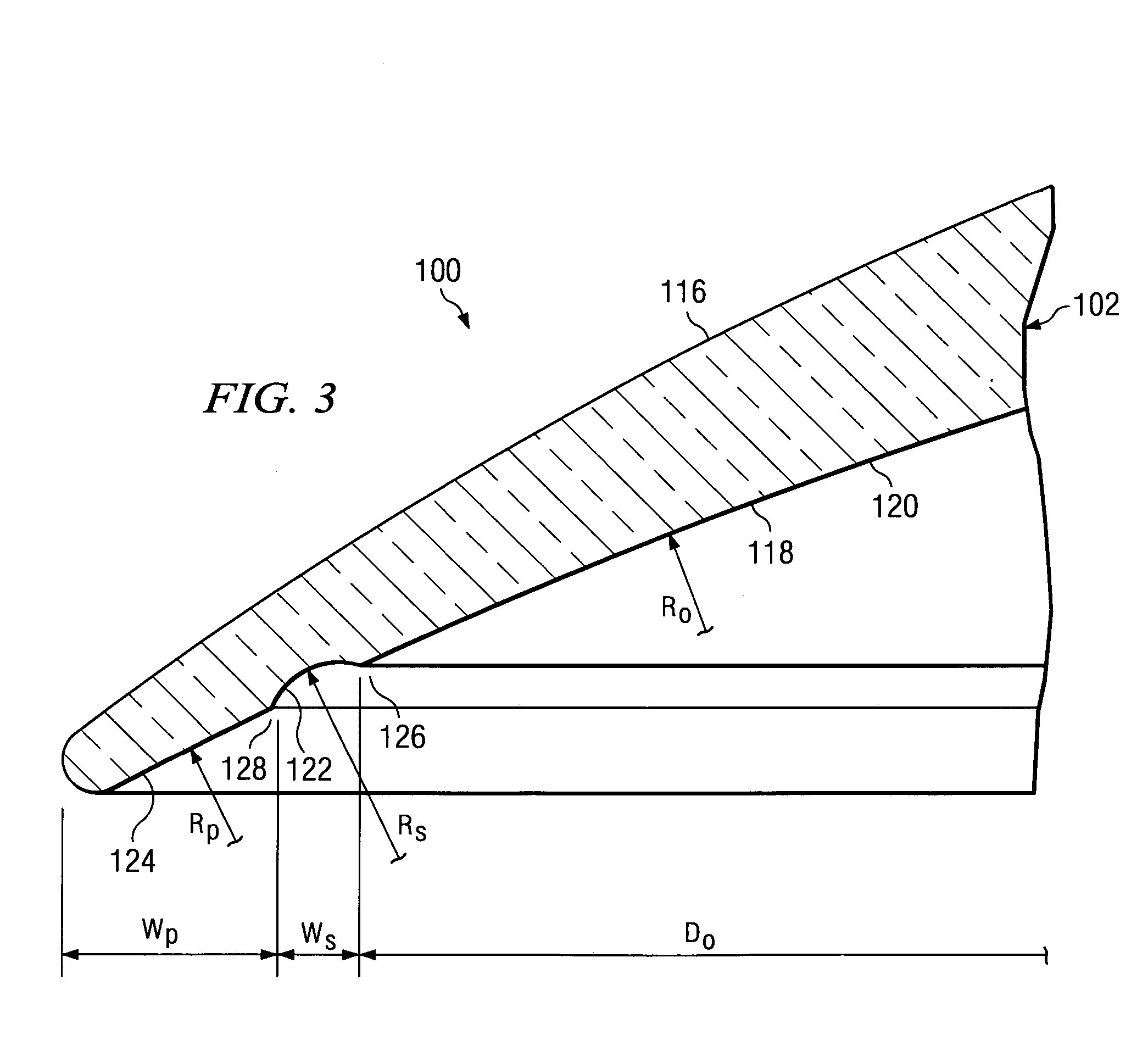Rigid gas permeable contact lens with 3-part curvature
a contact lens and three-part technology, applied in the field of contact lenses, can solve the problems of not finding a satisfactory lens, unable to meet the vision needs of patients, and difficulty in fitting post-operative patients with conventional rgp contact lenses
- Summary
- Abstract
- Description
- Claims
- Application Information
AI Technical Summary
Benefits of technology
Problems solved by technology
Method used
Image
Examples
example 1
Patient ID #100
[0042]
Right Eye:Left Eye:KM:44.25 D (7.63 mm) @ HKM:44.00 D (7.67 mm) @ H47.25 D (7.14 mm) @ V47.75 D (7.07 mm) @ VCorneal astigmatism = 3.00 DCorneal astigmatism = 3.75 DRefraction:−3.50 D (refrac.)Refraction:−7.25 D (refrac.)+3.25 D (astig.) @ 123 (axis)+4.50 D (astig.) @ 073 (axis)Lens Specs.:OD = 10.2Lens Specs:OD = 10.2DO = 8.7RO = 7.67DO = 8.7RO = 7.65WS = 0.25RS = asphericWS = 0.25RS = asphericWP = 0.50RP = 12.00WP = 0.50RP = 12.00CorrectiveRx = −3.75 DCorrectiveRx = −4.75 DLens Prescrip:Lens Prescrip:Comments / Results: Initial diagnosis of severe corneal scarring and severe irregular astigmatism. Patient was termed a “Limited Vision Potential” by corneal surgeons. When fit with the above lenses, vision was 20 / 15 in both eyes. Lenses (RGP) were very comfortable per the patient. Final VA: OD 20 / 15; OS 20 / 15.
example 2
Patient ID #101
[0043]
Right Eye:Left Eye:KM:44.00 D (7.67 mm) @ HKM:45.00 D (7.50 mm) @ H41.50 D (8.13 mm) @ V41.00 D (8.23 mm) @ VCorneal astigmatism = 2.50 DCorneal astigmatism = 4.00 DRefraction:n / a D (refrac.)Refraction:n / a D (refrac.)+3.00 D (astig.) @ n / a (axis)+4.00 D (astig.) @ n / a (axis)Lens Specs.:OD = 10.0Lens Specs:OD = 10.0DO = 8.5RO = 8.00DO = 8.5RO = 8.04WS = 0.25RS = asphericWS = 0.25RS = asphericWP = 0.50RP = 12.50WP = 0.50RP = 12.00CorrectiveRx = −8.00 DCorrectiveRx = −9.00 DLens Prescrip:Lens Prescrip:Comments / Results: Patient was diagnosed with Keratoconus in the right eye and a corneal transplant in the left eye. She had previously been fitted with bitoric lenses but her vision was 20 / 40 and the lenses were very uncomfortable. When refitted with above lenses, her vision was 20 / 20 in both eyes and she is now very comfortable. Final VA: OD 20 / 20; OS 20 / 20.
example 3
Patient ID #102
[0044]
Right Eye:Left Eye:KM:41.00 D (8.23 mm) @ HKM:41.00 D (8.23 mm) @ H46.50 D (7.26 mm) @ V46.50 D (7.62 mm) @ VCorneal astigmatism = 5.50 DCorneal astigmatism = 5.50 DRefraction:n / a D (refrac.)Refraction:n / a D (refrac.)+5.50 D (astig.) @ n / a (axis)+5.50 D (astig.) @ n / a (axis)Lens Specs.:OD = 10.0Lens Specs:OD = 10.0DO = 8.5RO = 8.00DO = 8.5RO = 8.00WS = 0.25RS = asphericWS = 0.25RS = asphericWP = 0.50RP = 12.00WP = 0.50RP = 12.00CorrectiveRx = +3.00 DCorrectiveRx = +2.50 DLens Prescrip:Lens Prescrip:Comments / Results: Severe astigmatism diagnosis. Wore bitoric lenses and had poor vision and old lenses were very uncomfortable. Refitted with lenses above in spherical base curves and vision is 20 / 20 in each eye and lenses are very comfortable. Final VA: OD 20 / 20; OS 20 / 20.
PUM
 Login to View More
Login to View More Abstract
Description
Claims
Application Information
 Login to View More
Login to View More - R&D
- Intellectual Property
- Life Sciences
- Materials
- Tech Scout
- Unparalleled Data Quality
- Higher Quality Content
- 60% Fewer Hallucinations
Browse by: Latest US Patents, China's latest patents, Technical Efficacy Thesaurus, Application Domain, Technology Topic, Popular Technical Reports.
© 2025 PatSnap. All rights reserved.Legal|Privacy policy|Modern Slavery Act Transparency Statement|Sitemap|About US| Contact US: help@patsnap.com



